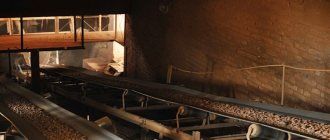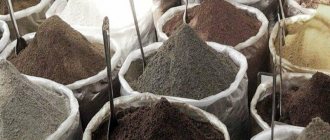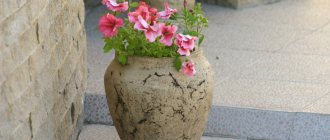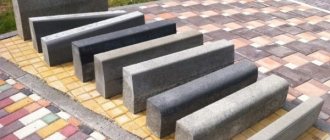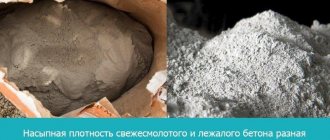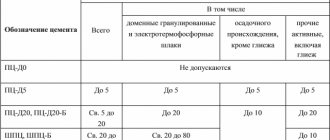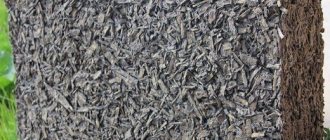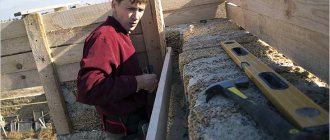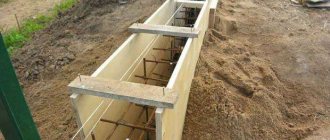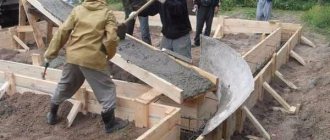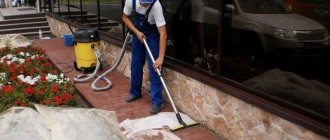For the construction of objects that are constantly exposed to moisture, waterproof cement is used. Cement is currently the most common building material, which is difficult to do without during the construction of any facility.
Waterproof cement is used in the construction of structures that are subject to constant high humidity.
Sometimes, when constructing a number of structures, water resistance is ensured by complex protective systems. Waterproof cement can greatly alleviate such problems, which is why it is increasingly attracting increased interest.
Necessity of material
After hardening, any cement has a certain amount of air inclusions, which are microscopic reservoirs for penetrating water; and if the picture is supplemented with capillaries present in the thickness of the material, then this entire system will ensure the permeability of cement and the accumulation of moisture inside, which has a detrimental effect on its properties. Small cavities in the form of pores and microcracks in the structure are caused by excess water in the cement mortar during its laying, insufficient compaction of the layer, deformation and shrinkage processes, cracking under mechanical load, etc.
Concrete composition data table.
To create waterproof cement means to eliminate air inclusions by expanding the material itself or filling them with another substance. Such material is necessary in the construction of structures that are constantly exposed to water or high humidity. Such structures include: foundations in wet soils and plinths with low groundwater; basements, cellars, inspection pits; floor screeds in a number of conditions; walls of pools, wells, tanks and other structures. The use of waterproof cements in such cases will significantly reduce waterproofing measures.
Work with concrete in water for private housing construction
In individual construction, other technologies for pouring concrete into water are used, which allow solving a variety of problems. After all, pouring concrete into water for a foundation, for example, is unacceptable. Therefore, you first need to make a reliable and durable concrete structure, and then build a foundation on it.
Device using bags
The technology is quite simple: a saturated solution is mixed, poured into bags, which are used to fill a pit or trench (a prepared hole above the groundwater level). They wait 30 days, then formwork (walls or foundation) is built around the structure using conventional technology.
Types of waterproof cements
According to the mechanism for achieving the goal, the following main types of material are distinguished: waterproof expanding cement; waterproof non-shrinking cement and cement with hydrophobic filling. The mechanism of the protective functions of the expanding composition is based on the fact that a substance is introduced that causes the mixture to expand during pouring and rapid hardening. The principle of operation of the non-shrink method involves the addition of an ingredient that ensures the formation of crystals that compact the structure of the material during hardening without free expansion of volume. The introduction of hydrophobic components into the structure of the cement mixture is explained by their protective functions upon contact with penetrating water (they expand, chemically bind, form crystalline structures, etc.).
Scope of application
Most often, quick-setting cement mixtures are used specifically for the reconstruction of buildings and structures. In such houses they can be used, for example, for waterproofing, puttying, sealing:
- Seams.
- Cracks.
- Gaps.
- Holes.
Very often, basements and foundations of old buildings are repaired using such materials.
In new construction, such materials are used to quickly attach anchors, any other metal structures, and all kinds of parts to concrete. In some cases, such solutions are also used when laying stoves. Also, this type of material can be used for the manufacture of stucco interior decorations when installing columns.
Expanding cement
Table of proportions for preparing concrete.
Waterproof expansive cement is made by introducing a hydroaluminate-based mixture. The most common composition is the following: aluminous cement (70% by weight), semi-hydrous gypsum (20%), calcium hydroaluminate (10%). This mixture is mixed dry and crushed. Due to the active interaction of the components, the mass expands while simultaneously rapidly hardening. When water is added to the cement mixture, setting of the mass begins within a few minutes and is completed within 10 minutes.
The degree of expansion of the material increases with increasing humidity. Internal expansion continues for quite a long time. After 3 days, the cement should correspond to the M300 grade, and after 28 days - M500. If necessary, increase the hardening time, you can add borax or acetic acid.
Waterproof expanding cement has fairly high waterproofing properties, which increase when the solution is in water. This condition makes it possible to use the material even for dams, dams, and swimming pools.
Compound
Excellent performance properties of the mixture are achieved due to the presence of the following ingredients in the product:
- blowing agents;
- accelerators;
- liquefiers.
The latter components increase the plasticity of the solution and allow the water to be evenly distributed in it. The first additives and accelerators reduce the time it takes for moisture to be removed from the solution. Their use reduces the mechanical characteristics (ultimate strength and ductility) of the future surface.
Non-shrink cement
Waterproof non-shrink cement is also produced by adding aluminate, but in smaller quantities, which is not enough for the overall expansion of the mass. As a result of its influence, a crystalline cement stone is formed, which compacts and strengthens the structure. The non-shrinking mixture consists of aluminous cement in a concentration of 85% by weight. Additionally, asbestos is introduced in quantities of up to 5%. The rest of the volume is occupied by calcium aluminate and semi-aqueous gypsum.
Graph of water to cement ratio for different grades of cement.
After approximately 1 hour of hardening, the composition reaches 75% of its final strength, which is established after 28 days of drying. The desired condition for the mass to harden is a humid environment. If air humidity is less than 70%, then shrinkage processes are possible.
Taking into account that this type of material is intended for structures that are exposed to water for a long time, anti-corrosion substances are added to the cement mortar in the form of a mixture of calcium nitrate, ferrosilicon and aluminum powder. This allows for the protection of metal reinforcing elements.
A homemade composition can be prepared by adding “liquid waterproofing hyperconcentrate” of the Dehydrol 10-2 brand to the cement. This liquid is introduced into the cement mixture in an amount of 4 liters per 1 m³ of solution. For example, you can prepare a waterproofing concrete mixture according to the following recipe: cement - 125 kg; sand - 30 kg; crushed stone - 55 kg; dehydrol - 0.2 l; water - 10 l. The waterproof liquid is diluted with water and then mixed with the remaining ingredients of the mixture.
When preparing a homemade solution, you should avoid getting clay or sand containing it into the composition.
What is a concrete plasticizer and how does it work?
As mentioned above, pores inevitably form in the concrete mixture, which subsequently become destructive for it. The more pores, the worse the concrete, and the porous structure itself cannot be strong.
Additives in such a situation solve two problems - they repel water and significantly strengthen the concrete, increasing its density.
There are different types of waterproofing (hydrophobic) additives, they all perform the same function, but in different ways. Some swell, filling the pores, and some remove bubbles, increasing the mobility of the mixture and changing its structure. Additives are added during the concrete mixing process and make up about 10 percent of the mixture.
Such additives do not have an expiration date, unlike means of external waterproofing of products; we will write about them in more detail a little later.
Hydrophobic additives
In order to increase the water resistance of cement, special additives can be used. Three main types of such substances can be distinguished: plasticizing agents, sealants and polymer compositions.
Characteristics of concrete after using additives.
Plasticizing ingredients increase the mobility of the solution, covering the cement particles with a kind of shell, displacing air. Sealants ensure compaction of the mixture after the solution hardens. They fill the volume of air formations. Polymer compositions mainly act by increasing the mobility of the solution and forming a polymer water-repellent film. Such compositions are especially effective in cracking cement composition.
Mixtures based on polycarboxylates can be recommended as a universal plasticizing additive. They are introduced into the cement composition in quantities of up to 1 liter per 1 m³ of solution.
The effect of compacting the structure can be achieved by adding components that, after a chemical reaction, crystallize the cement base. The material, reacting with the filler, expands and fills the pores. The most widespread are preparations based on microsilica and some other penetrating additives.
Table of proportions for preparing concrete.
To prepare waterproof cement mortar with your own hands, a wide range of bridging agents is offered. These include foreign-made compositions: Penetron, Vandex, Xaypex, as well as fairly effective domestic compositions: Lakhta, Hydrotex, Aquatron, Hydro, Kalmatron. The structure of such standard mixtures includes, in addition to chemically active ingredients, a cement-sand component. Their introduction into cement (concrete) after it hardens ensures that the product not only seeps inside, but also forms a protective waterproofing film on the outside.
Components
Companies produce this type of material according to individual production recipes, hiding the details of the composition. However, the basic consistency includes standard components. The set of properties inherent in varieties of quick-hardening powder is provided by the following additives:
- quicklime;
- potash;
- hydrochloric acid;
- various salts.
Based on their percentage, the rate of hardening and development of higher strength may vary, but the process still proceeds as quickly as possible. Also, production does not exclude the use of various mineral additives and other components (of non-mineral origin) to increase plasticity, ensure waterproofing ability, chemical resistance and other quality indicators.
Self-waterproofing
In practice, in private construction, “folk” means of preparing waterproof cement and concrete are often used. We can recommend the most famous ones. The liquid additive is prepared from lye (0.5 kg) and alum (2.5 kg) in 10 liters of water. For 8 kg of cement you need 1 liter of this additive. Another way is this. Coarse table salt (3 kg) is dissolved in 25 liters of water, after which it is mixed with cement until the consistency of thick sour cream. Finally, the third option - linseed oil (7.5 kg) and paraffin (3 kg) are mixed with cement (12.5 kg), after which everything is mixed with water to the desired state.
When preparing waterproof cements, you need the following tools: construction mixer, scales, shovel, measuring bucket, scoop, spatula, trowel.
Waterproof cement will significantly increase the reliability of structures when exposed to moisture. This composition can be prepared from standard ingredients or with your own hands.
Work options
They can be carried out in two ways:
- at shallow depths, where there are no tides and there are minor waves, the solution is lowered through a funnel into cavities fenced with special jumpers, or concrete is poured into the water;
- at quite impressive depths, in places where the waves can be very strong, caissons become a reliable assistant in concreting work. The concrete mass is moved into such caissons through shafts or pipes. It’s better not with your own hands, but with concrete pumps.
In the photo - hydraulic structures
How is pouring carried out, what is the GOST for water for concrete and mortars? Let's take a closer look at this process.
Method No. 1
- It begins with the fact that in the place where the proposed structure will be erected, rows of piles are driven (sheet piles are used). This makes it possible to avoid drainage works.
- Then concrete is thrown between them through a funnel.
Advice: if the base under the concrete solution is of insufficient density, for example, from thrown stones. In this case, it must first be densely crushed, and then covered with a cloth, the edges of which will be curved upward. Thanks to such measures, the solution will not be able to seep into the crushed stone, and concreting will be much better.
How to concrete in water using a concrete pump
Preparing concrete
After the base is ready, you need to prepare the solution. It is important to remember that it needs some time to mature. At the same time, it should not be exposed to direct sunlight or moisture.
If the solution is kept for the required period, then it will reach the desired consistency for immersion in water: it will set a little and will not erode much in water. This method of preparing a solution was first used by Kinipple, an engineer from the UK.
In this way, he managed to avoid unnecessary costs for installing a system to protect the concrete solution from erosion. Kinipple dipped the solution, which was already half-hardened, under water.
In addition, the engineer provided technology to protect it from the force of waves and underwater currents. To do this, he covered the outside of the concrete surface with thick linen fabric (canvas).
Advice: for the core of such a structure, use an unsaturated solution, while the outer part requires a saturated solution, and its thickness should be at least 1 m.
- Depending on the characteristics of the rate of hardening of the concrete mass, it is necessary to distribute the time between mixing it and moving it into water . It is important to calculate the timing in the most optimal way so that the concrete does not erode too much when immersed. Otherwise, some of the cement will be lost, which will negatively affect the quality of the structure.
- It is also important to ensure that the concrete mass does not become too hard, because in this case it will not bind tightly to the solution that was previously immersed and will not become monolithic . In those underwater areas that are subject to powerful waves and strong currents, a small portion of quick-hardening cement is added before placing the concrete in the water.
- Among other things, concrete submerged in water needs compaction. To ensure this, it is compacted. The top of the tamper is above the water level, taking the blows of the tool used for tamping. Remember that tamping must be done very carefully, because if you overdo it, then too much vibration and waves will inevitably lead to erosion of the concrete.
To obtain such concrete, you will need to mix cement with pure pitch in a ratio of 1 to 2.5.
Advice: the answer to the question - does concrete allow water to pass through can be answered - it depends on the composition, so it can be used to build water tanks.
Reinforced concrete water tanks in production
Method number 2
- Near the area where it is planned to build the necessary concrete structure, for example, a dam, it is necessary to dig two ditches at the bottom using dredging machines. Semi-hardened concrete should be poured into them, directly into the water. The result will be two shafts that will reach the low water level.
Advice: before you start laying them, evaluate the condition of the reservoir in the selected area and the quality of the cement. The price of the latter cannot be low.
- To remove these shafts, the concrete mass is lowered into water in sacks. This idea is not accidental; their value is that in the process they are able to form a monolith. After pouring cement for the shafts, iron piles are driven. Do this at an angle to create slopes.
The concept of hydrophobic cements and their use in specialized construction
The most common and one of the relatively inexpensive but high-quality binders is cement. This material is necessary in any construction: both private and industrial. That is why entire research institutes are busy developing and improving its production characteristics. For the construction of objects in special conditions, which include wet autumn and harsh winter, professional builders prefer the use of waterproof grades of cement.
Waterproofing the basement from the inside from groundwater
The basement is protected from water in two formats: vertical waterproofing of the walls is performed (if there is no drainage and the basement part is at the groundwater level) and horizontal (the base is treated at the groundwater level). Both methods or one can be chosen, it all depends on factors such as the quality of insulation and foundation material, the level of groundwater and precipitation, operating conditions and purpose of the room, the presence of drainage, etc.
Basement walls from the inside can be protected in several ways - use vertical methods: membranes, rolls, coating materials, plastering, forming a barrier of liquid glass or rubber. Typically, such options are suitable where there is no properly installed drainage system.
Horizontal protection against water is carried out along the floor, preventing the rise of water from the ground or the seepage of moisture through the capillaries of concrete. This type of protection is desirable in any case, regardless of the type of structure and the characteristics of the soil and climate. For protection, roll materials or concrete with waterproof polymer additives are used. The water resistance of additives must be very high in order for the protection to be of high quality.
To prevent capillary penetration of moisture into the room, it is advisable to implement both types of waterproofing. Vertical protection can be partially mounted by treating the walls at least 30 centimeters in height.
Methods for determining water resistance
To determine the level of waterproof indicator, basic and auxiliary methods are used. The main ones include:
- “wet spot” method (measurement of the maximum pressure during which the sample does not allow water to pass through);
- filtration coefficient (calculation of the coefficient associated with constant pressure and time period of the filtration process).
The auxiliary methods include:
- determination by the type of substance that binds the solution (the content of a waterproof solution of hydrophobic cement, Portland cement);
- by the content of chemical additives (the use of special attachments makes the mixtures more waterproof);
- according to the pore structure of the materials (the number of pores decreases - the indicator increases, increasing the moisture-resistant quality with the help of sand, gravel).
Brands of moisture-resistant (hydraulic) concrete
B22.5M300 is considered a common brand in hydraulic construction. Its frost resistance is F100-F200, water resistance is W4-W10. When choosing a brand, the type of soil is taken into account; for clay surfaces, no less than M350 is suitable.
Table 1 – Brands of waterproof concrete
| Classes and grades of concrete | Frost resistance grades | Waterproof grades |
| B7.5M100 | Not standardized | W2 |
| B15M200 | F75-F150 | W2-W4 |
| B20M250 | F50-F200 | W2-W8 |
| B22.5M300 | F100-F200 | W4-W10 |
| B25M350 | F100-F300 | W4-W20 |
| B30M400 | F300 | W10 |
| B35M450 | F200-F300 | W8-W14 |
| B40M550 | F200-F300 | W10-W16 |
| B45M600 | F100-F300 | W12-W18 |
Differences in brands and areas of application:
- M100 is suitable for making borders;
- M150 - fencing is made from this concrete, the floor is poured;
- M200 is used for sidewalks and building renovation;
- M250 is multifunctional, suitable for the manufacture of any type of foundation;
- M300 is a popular brand, suitable as a foundation for the construction of brick houses;
- M350 - a foundation made from this brand is suitable for the construction of high-rise buildings;
- M400 is chosen for the construction of bridges and objects in contact with water;
- M450 and M500 are suitable for the construction of gutters.
Painting waterproofing
Painting waterproofing of concrete is a rather complex and labor-intensive process that requires the use of special equipment. This method is more often used in the construction of large industrial facilities.
It is possible to make concrete waterproof using surfactants. They form a waterproof layer (film) on the concrete surface. These substances are applied using special equipment: pistols, sprayers. Most often, bitumen heated to high temperatures, mastics, emulsions and other mixtures are used. Some of them are not able to withstand low temperatures and often become covered with cracks. To give concrete special properties, its surface is carefully processed and cleaned before applying the painting material.
Then a layer of paint or any other mixture is applied, its thickness can be different, on average several millimeters. A layer of primer is placed on it. Currently, hydrophobic solutions based on organosilicate compounds are widely used. But they do not completely close the pores in concrete; therefore, they are only relevant for protection from precipitation and low water pressure. Fluates, salts of fluoric acid, are also highly effective. But they are only suitable for finely porous concrete. The use of bitumen mastic can give good results. It consists of bitumen and a mineral component (limestone, clay). Their ratio varies. The percentage of bitumen in the mixture ranges from 30 to 45%. Moreover, such a coating material has high frost resistance.
Tips for choosing concrete impregnation
When choosing impregnation, pay attention to the following points:
- mixtures for chemical hardening on a silicate basis make it possible to ensure effective dust removal at minimal cost, as well as intensive use of the floor covering;
- It is advisable to use polymer compositions based on epoxy fillers when the coating is exposed to aggressive environments and in order to ensure the presentation of the base.
When choosing a material for surface waterproofing, you should take into account its operating conditions and the features of the concrete structure
Technical properties of the solution
1. Waterproof cement has tensile and expansive properties with insignificant shrinkage. This applies to both plastic and setting indicators. Hardening time is 2-3 days.
2. Rheoplasticity is a characteristic of fluidity with a minimum amount of water. In proportion, about 20-30% per 3 kg of dry mixture is enough. When mixing 25 kg, the output volume of the finished composition is 16.5-17 liters. However, the consistency in this proportion is very liquid, so it is practical to use it for pouring concrete products or structures into formwork.
3. Due to the high fluidity, properties such as good workability and increased density coefficient are obtained in the early and final stages of application. It has excellent opeophobic characteristics, that is, resistance to hydrocarbons and oil compounds.
4. The resulting viscous concrete is the same in proportions as that with a reduced cone settlement, while there is practically no water separation. It is also valued for its high resistance to the influence of sulfate compounds. Due to the small amount of water in the non-shrink mortar, periodic treatment with special concrete care products is required during the drying process. If this is not done, the thin pouring layer may begin to crack due to the speed of setting.
Application area
The main purpose is the production of insulating shells of elements in large-scale reinforced concrete structures, which are used for water filtration. It also acts as a waterproofing material in underground tunnels or channels under water. Due to its high water resistance, it can be used to repair or seal seams in large-panel buildings.
VBC is selected in conditions of high humidity from 70% and above, since in sufficiently dry rooms up to 65% the mixture can cause significant shrinkage. This type of cement is selected to protect concrete structures from the effects of moisture-containing chlorides, sulfites and caustic sulfates.
Among other things, quick-setting cement can be used for the following types of work:
Modern manufacturers produce materials using individual technologies and release them under their own brands - HYDRO-SI, NTs 10, Master Emaco A 640 (MacFlow) and others.
Cost of non-shrinking cements in Moscow
| Manufacturer | Purpose | Quantity, kg | Price, rubles |
| NC | For waterproofing | 25 | 300 |
| Straining | 25 | 300 | |
| Ceresit CX 5/2 | Mounting | 2 | 330 |
| Eurocement M400 D20 CEM II A-SH 32.5 | Waterproof with mineral additives | 50 | 290-320 |
| HYDRO-SI | Non-shrink waterproofing | 20 | 360-380 |
| MasterEmaco A 640 (MacFlow) | Non-shrink plasticized | 25 | 1650 |
Source
